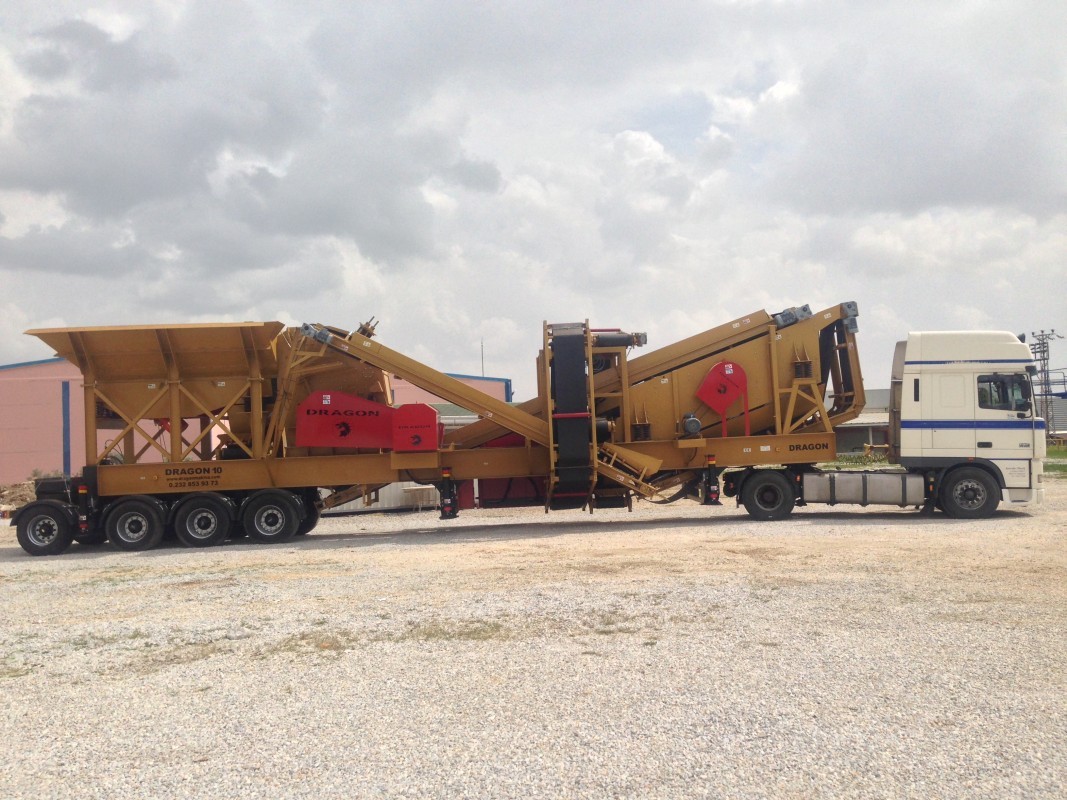A mobile screening plant is a portable industrial system designed to classify materials (sand, gravel, ores, recycled products) by particle size or remove impurities. Unlike stationary plants, mobile units are mounted on wheeled or tracked chassis, enabling easy transportation between sites. This feature is ideal for construction, mining, and urgent projects, offering time and cost efficiency.
How Does It Work and What Does It Do?
Key Components:
Vibrating Screen: Classifies materials using 2-4 layered sieves.
Feed Conveyor: Transfers raw material to the screen uniformly.
Diesel Generator or External Power Source: Provides energy.
Control Panel: Adjusts vibration speed, angle, and other parameters.
Foldable Conveyors: Ensures compact size during transport.
Operation Process:
Site Preparation: The plant becomes operational within 30-60 minutes.
Material Loading: Raw material is fed via excavators or loaders.
Screening & Classification: The vibrating screen separates materials into predefined sizes (e.g., 0-3 mm, 3-10 mm, 10-20 mm).
Storage & Transport: Sorted materials are moved to stockpiles via conveyors or trucks.
Applications:
Construction Sites: Producing concrete aggregates or asphalt materials.
Mining Operations: Pre-processing ores or separating waste.
Disaster Recovery: Rapid sorting of debris post-natural disasters.
Farmland: Soil purification or organic waste screening.
Advantages:
Mobility: Easy relocation between job sites.
Quick Setup: 70% faster deployment than fixed plants.
Low Operational Cost: Fuel-efficient engines or grid power compatibility.
Versatility: Customizable with different screen meshes or crusher modules.
 English
English
 Le français
Le français
 Türkçe
Türkçe

